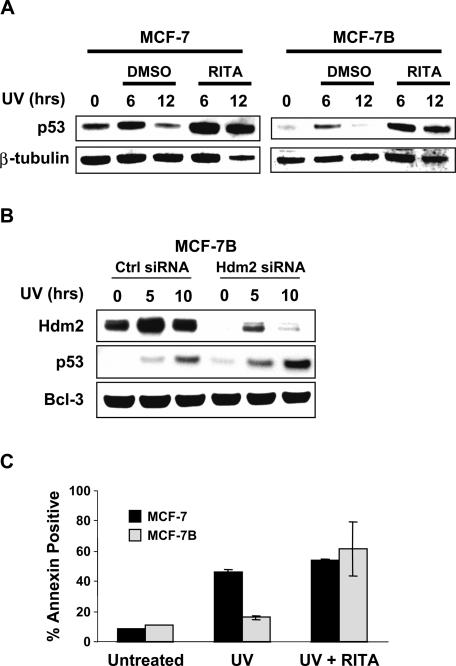Figure 6.
Disruption of the p53-Hdm2 interaction rescues the effects of Bcl-3 overexpression. (A) Disruption of the p53-Hdm2 interaction restores the ability of UV to induce p53 in MCF-7B cells. MCF-7 and MCF-7B cells were pretreated for 30 min with either DMSO or 2 μM RITA and then treated with 40 J/m2 UV-C for the indicated times. Whole-cell extracts were prepared and subjected to Western blot analysis using antibodies specific for p53 and β-tubulin. (B) Knockdown of Hdm2 restores the ability of UV to induce p53 in MCF-7B cells. MCF-7B cells were transfected with either a control siRNA or an siRNA specific for Hdm2. Forty-eight hours after transfection, cells were treated with 40 J/m2 UV-C for the indicated times. Whole-cell extracts were prepared and subjected to Western blot analysis using antibodies specific for p53, Hdm2, and β-tubulin. (C) Disruption of the p53-Hdm2 interaction restores the ability of UV to induce apoptosis in MCF-7B cells. MCF-7 and MCF-7B cells were left untreated, or were treated with 40 J/m2 UV-C or with 40 J/m2 UV-C plus 2 μM RITA. Eighteen hours after treatment, apoptosis was measured by flow cytometric analysis of Annexin-V staining.

